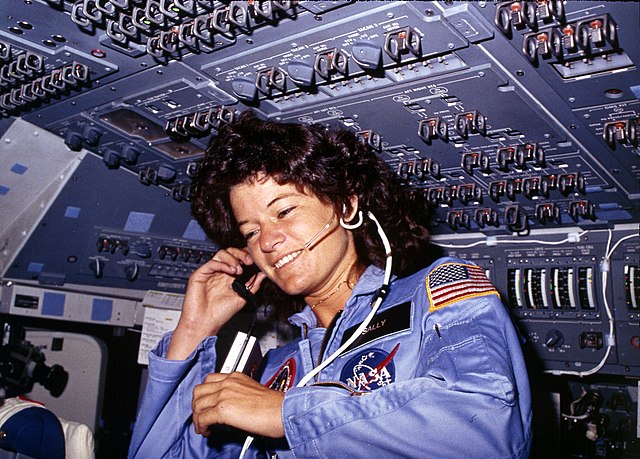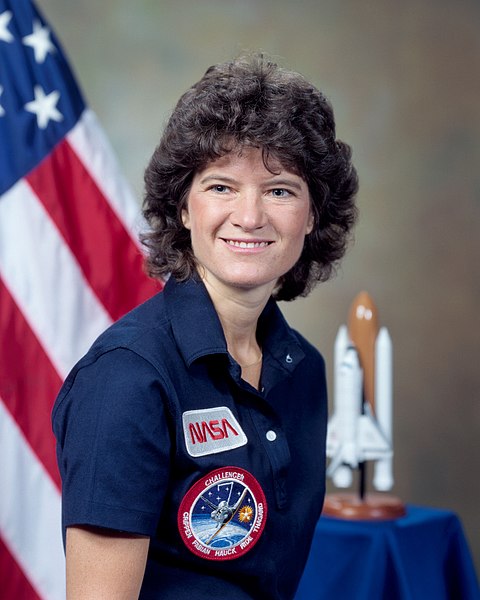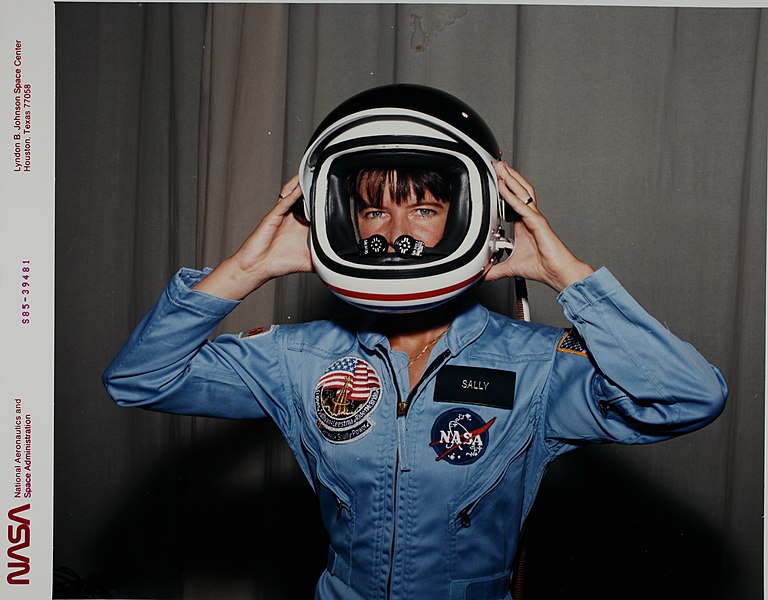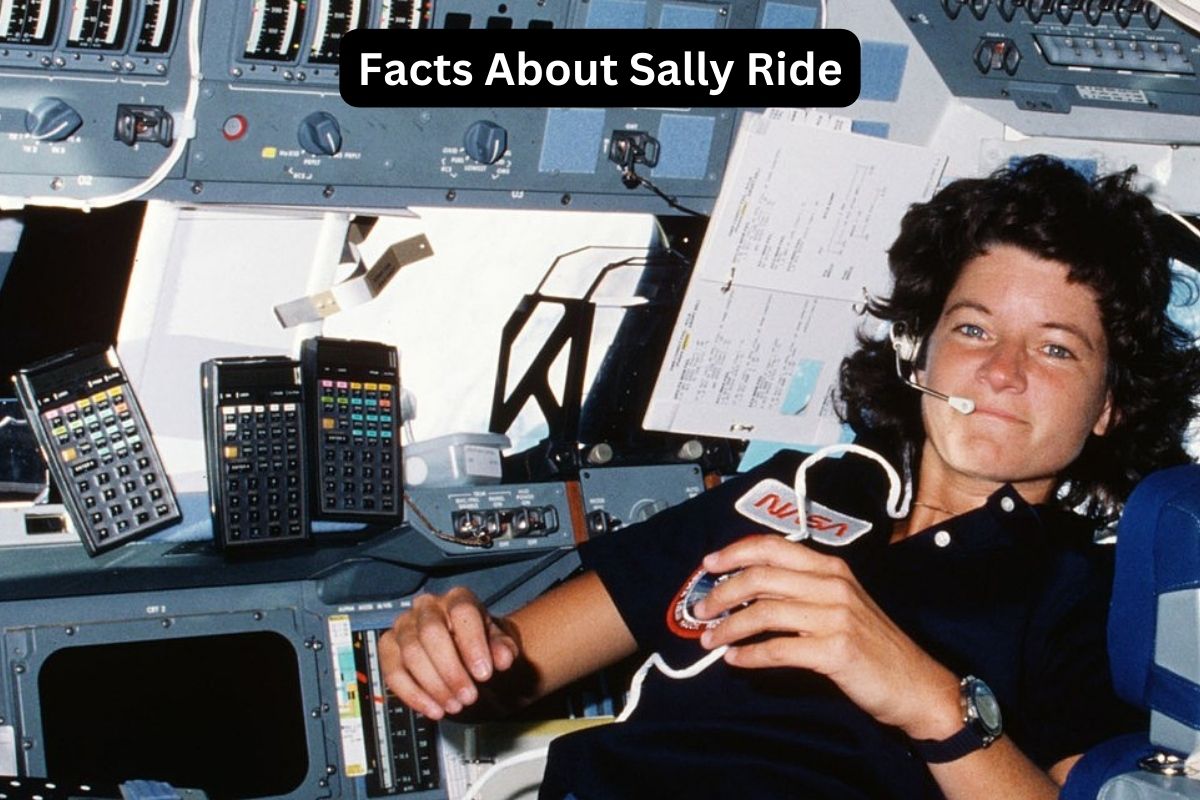Sally Ride was a pioneering astronaut and physicist who broke barriers as the first American woman in space. Her remarkable journey took her from her birth in Los Angeles, California, on May 26, 1951, to becoming a two-time space traveler.
Beyond her space missions, Sally Ride’s contributions extended to education and advocacy for STEM fields, making her an enduring inspiration for women and girls in science and space exploration.
She co-founded Sally Ride Science to promote STEM education, received the Presidential Medal of Freedom, and left a lasting legacy that continues to shape the future of space exploration and scientific discovery.
Sally Ride Facts
1. Born on May 26, 1951, in Los Angeles, California
Sally Kristen Ride was born in Encino, a neighborhood in the San Fernando Valley of Los Angeles. She grew up in a family that valued education and encouraged her curiosity about the world around her from an early age.

2. First American woman in space in 1983
On June 18, 1983, Sally Ride made history by becoming the first American woman to travel to space. She accomplished this remarkable feat as a mission specialist on the Space Shuttle Challenger during NASA’s STS-7 mission.
Her pioneering journey into space marked a significant milestone for women in the field of space exploration.
3. Earned a Ph.D. in physics from Stanford University
Sally Ride was not only an astronaut but also a highly educated scientist. She attended Stanford University, where she pursued a dual major in English and physics for her bachelor’s degree.
Also Read: Facts About John Glenn
Following her undergraduate studies, she continued her academic pursuits at Stanford and earned both a master’s degree and a Ph.D. in physics.
Her doctoral research focused on astrophysics and free-electron laser physics, showcasing her dedication to scientific inquiry and her passion for understanding the universe.
4. Flew on two space missions: STS-7 and STS-41-G
After her historic first flight in 1983 during the STS-7 mission, Sally Ride had the opportunity to return to space on a second mission. This mission, STS-41-G, took place in October 1984.
Also Read: Timeline of Sally Ride
During this flight, she continued to work as a mission specialist on the Space Shuttle Challenger, contributing to the deployment of communication satellites and conducting scientific experiments in space.
Her participation in multiple spaceflights solidified her reputation as a skilled and accomplished astronaut.

5. Worked as an astronaut for NASA
Sally Ride joined NASA’s astronaut corps in 1978 as part of NASA’s first class of astronauts to include women. Her selection was a significant step forward for gender equality in the space program.
During her time as an astronaut, she not only flew in space but also contributed to various aspects of space missions, including robotics and scientific research. Her work as an astronaut demonstrated her commitment to advancing space exploration and science.
6. Founded Sally Ride Science to promote STEM education
After leaving NASA in 1987, Sally Ride shifted her focus to education and inspiring the next generation of scientists and engineers.
In 2001, she co-founded Sally Ride Science, a company dedicated to developing educational programs, books, and materials aimed at making STEM subjects engaging and accessible, particularly for young girls.
This endeavor was driven by her belief in the importance of encouraging and supporting students, especially girls, to pursue careers in science, technology, engineering, and mathematics (STEM). Sally Ride Science continues to impact STEM education, ensuring her legacy lives on through educational initiatives.

7. Served as a professor at the University of California, San Diego
Following her career as an astronaut, Sally Ride transitioned into the academic world. She joined the faculty of the University of California, San Diego (UCSD), where she held the position of professor of physics.
In this role, she not only shared her expertise but also inspired and mentored future generations of scientists and researchers. Her presence at UCSD further solidified her commitment to promoting STEM education and supporting the advancement of science and technology.
8. Received the Presidential Medal of Freedom
In 2013, posthumously, Sally Ride was awarded the Presidential Medal of Freedom, the highest civilian honor in the United States.
This prestigious recognition acknowledged her significant contributions to space exploration and her tireless efforts to advance STEM education. The award was a testament to her lasting impact on American society and the world.
9. Passed away on July 23, 2012
Sally Ride battled pancreatic cancer for 17 months before her passing on July 23, 2012, at the age of 61. Her death marked a significant loss to the scientific community and all those who admired her pioneering spirit and dedication to education.
Although she is no longer with us, her legacy continues to inspire and motivate individuals, especially women and girls, to pursue their dreams in STEM fields.
10. Inspires women and girls in STEM fields
Perhaps Sally Ride’s most enduring legacy is her role as a trailblazer and inspiration for women and girls in STEM fields.
Through her accomplishments as the first American woman in space and her commitment to STEM education, she shattered gender stereotypes and demonstrated that women can excel in traditionally male-dominated fields.
Her life story continues to motivate individuals to reach for the stars and make their mark in science, technology, engineering, and mathematics.
